| HOME | PROTECTION | NATURE | PLAN YOUR VISIT | FAQ | JOIN/DONATE | ABOUT |
| QMS Logging Project (Quartzville-Middle Santiam) |
In Spring, 2019, the Sweet Home District of the Willamette National Forest proposed a huge timber sale project in a large portion of our proposed national monument. Traditionally, timber sale projects consist of 1-10 "units" each amounting to 50-200 acres. The QMS project proposed to offer an extraordinary 290 units totaling 7900 acres. The Forest Service District's announced "purpose and need" is to: 1) Contribute to a predictable, sustainable supply of forest products to help maintain the stability of local and regional economies and markets; |
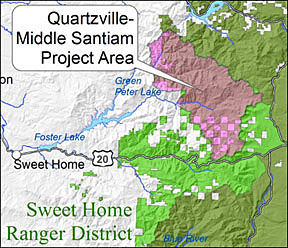 |
2) Improve stand growth, diversity and structure in young, dense plantations within Late Successional Reserves (LSR) in order to promote late-successional conditions; and |
Definitions QMS: A Forest Service designation for this project comprising areas in the Quartzville Creek and Middle Santiam watersheds. |
"To accomplish the purpose and needs, the project proposes approximately 7,900 acres of vegetation management treatments using a combination of thinning, shelterwood with reserves, dominant tree release, gap creation, and non-harvested skips." |
LSR: Late Successional Reserve. Areas designated by the Northwest Forest Plan to be managed to return the area to old-growth characteristics.
Matrix: Areas outside the LSR characterized by interspersed private holdings, and in which no administrative restrictions exist on harvesting methods. |
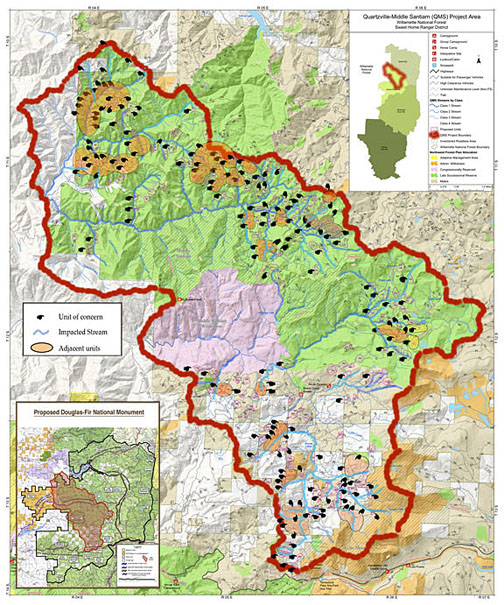 Nearly 300 loging units are scattered around the western portion of our proposed Douglas Fir National Monument. The black fingers are pointing to the units of greatest concern. - those containing streams that need to be “buffered”, units that are adjacent to each other and units directly impacting recreational areas. Click here to go to a full-sized version of this map. |
Shelterwood Logging: Harvesting where selected trees remain scattered throughout the tract to provide seeds for regeneration and shelter for seedlings.
Dominant tree release: As used in the QMS Report this seems to mean cutting the tallest or oldest trees to open the canopy and encourage younger, possibly diverse species.
NEPA terminology |
Concerning plantations, the Forest Service acknowledges that plantations lead to high risk fuel loading. "Overstocked stands have contiguous vegetation that can escalate the potential for high severity wildfires." |
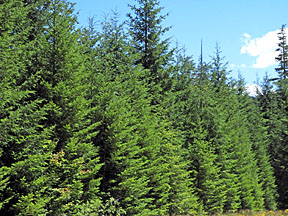 |
Thinning involves removing some of the plantation crowding to open the understory and to allow the remaining trees more room and less competition to grow. The degree of thinning in any particular unit is not defined for the QMS project. |
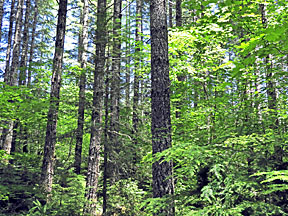 |
The Sweet Home Ranger District is in the process of developing an Environmental Analysis (EA) of the Project. The draft Environmental Analysis is expected sometime in early 2021. More information can be obtained at the Forest Service QMS information site. This project will have significant impact on our proposed Douglas Fir National Monument. Go here to see our complete comments. |
The Board of the Friends of Douglas-Fir National Monument (FDFNM) has been monitoring the QMS project since it was proposed, and offering comments on several occasions thus far. The comments offered can be summarized as follows: We don't oppose the production of forest products (lumber) under the right circumstances. There are plenty of plantations that need to be strategically thinned, supporting jobs in the mills and the woods for decades to come. We support promotion of late-successional conditions (old growth) in the forest through restoration forestry. After 14 months of study and field checking, we recommend the following implementation of the QMS project: • The QMS project is much too large to be addressed by a simple EA. Several EIS are required because of the QMS project's large scope and potential impact. • The adjacent LSR units must be offered in separate projects, time-spaced to allow local wildlife to move on. |
Restoration forestry: • accelerate the onset of • provide for diverse native tree species; • mimic more typical conditions of natural forest (small openings, • facilitate the use of prescribed fire and managed fire; and • decommission unnecessary roads (protect water quality and improve habitat for native wildlife). |
• Existing large trees in LSR units are already on their way to old growth characteristics and must not be cut in the thinning process. • Units that are inaccessible to the public due to landslides, locked gates, and impassible or no roads must be dropped. • The Matrix units adjacent to private clearcuts must be dropped to minimize the cumulative affect across the broad landscape. • All steep units that need helicopter logging must be dropped. • All streams must be buffered. Not every plantation acre can be thinned, as some are not readily accessible by existing roads, are too steep, are too close to streams or should be left for other habitat and/or watershed values. Go here for our full comments on the QMS project |
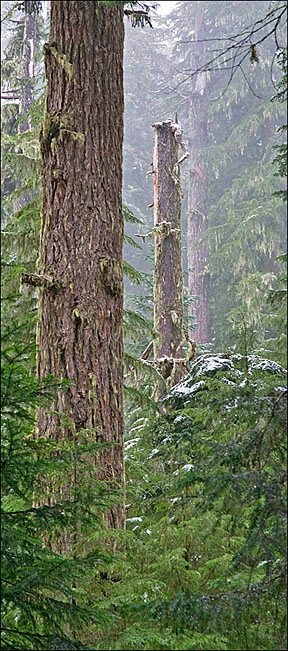 |
| Return to Home Page |